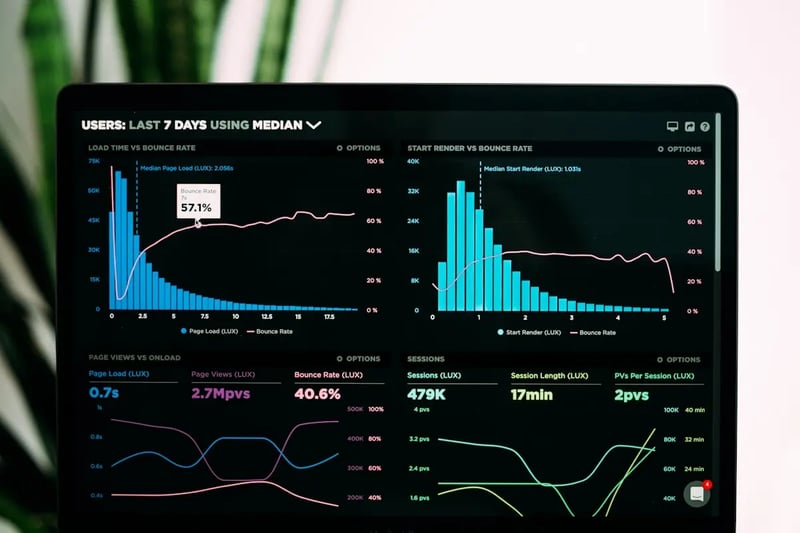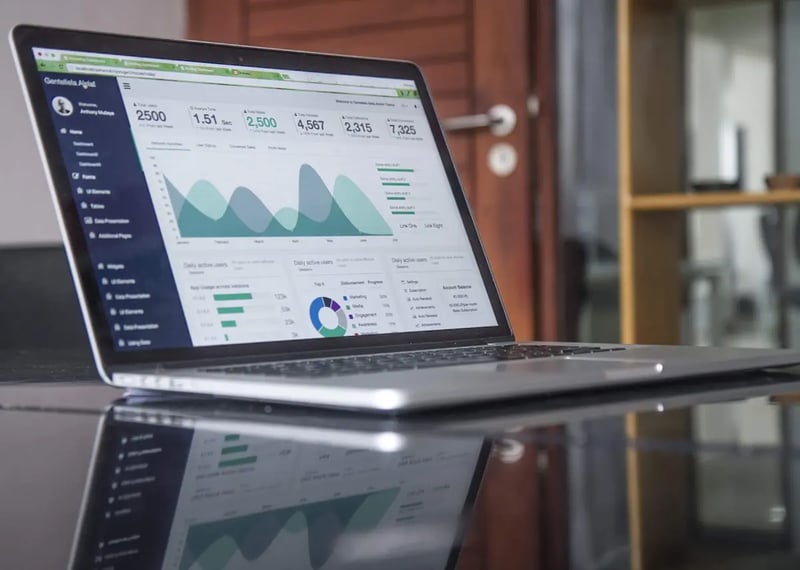What is a Good CTR? Industry Benchmarks for 2024

A good CTR (Click-Through Rate) depends on your industry, channel, and ad type. There’s no universal “good” CTR—what’s excellent for display ads (1%+) would be poor for search ads (where 3-5% is standard).
This guide provides comprehensive CTR benchmarks for 2024 based on data from 20+ industries and 5 major channels. Use our benchmark comparison tool below to see how your CTR stacks up.
Quick Answer:
- Google Ads Search: 3-5% is good, >5% is excellent
- Email Marketing: 2-3% is good, >5% is excellent
- Facebook Ads: 0.9-2% is good, >2% is excellent
- Display Ads: 0.5-1% is good, >1% is excellent
- Organic Search: 1.9-3% is good, >3% is excellent
Ready to calculate your CTR? Use our CTR Calculator to get instant results.
What is Considered a Good CTR?
A “good” CTR is relative to three key factors:
- Channel: Search ads naturally have higher CTR than display ads because users are actively searching
- Industry: B2B industries typically see higher CTR (3-5%) than B2C (2-3%) due to more targeted audiences
- Ad Type: Text ads outperform image ads, which outperform video ads in terms of CTR
Comparing your CTR to the wrong benchmark can lead to false conclusions. A 2% CTR might be excellent for display ads but poor for search ads.
Why CTR Benchmarks Matter
CTR benchmarks help you:
- Evaluate performance: Is your 3% CTR good or bad? Benchmarks provide context
- Set realistic goals: Aim for industry-specific targets, not arbitrary numbers
- Identify problems: CTR significantly below benchmarks signals issues with targeting, ad copy, or relevance
- Allocate budget: Channels with above-average CTR deserve more investment
Benchmark Data Sources
Our 2024 benchmarks are compiled from:
- WordStream analysis of 1M+ ad accounts
- HubSpot Email Marketing Benchmarks 2024
- Search Engine Journal industry reports
- Google Ads performance data
Data updated: December 2024
Average CTR by Channel

Different marketing channels have vastly different CTR ranges. Understanding these differences is crucial for setting realistic expectations and evaluating performance.
Good CTR for Google Ads Search
Average CTR: 3.17%
Good CTR: 3-5%
Excellent CTR: >5%
Needs Improvement: <1%
Google Ads search campaigns typically have the highest CTR among paid channels because users are actively searching for solutions. Your ad appears when intent is high.
Why Search CTR is Higher:
- Users have clear intent (they searched for your keyword)
- Ads match search queries directly
- High relevance between query and ad
Industry Variations:
- Legal services: 4.1% average
- B2B SaaS: 4.2% average
- E-commerce: 2.7% average
- Technology: 2.4% average
Improvement Tips:
- Use exact match keywords for higher relevance
- Write compelling ad copy that matches search intent
- Test different headlines and descriptions
- Improve Quality Score to get better ad positions
Learn more strategies in our CTR Improvement Guide.
Good CTR for Display Ads
Average CTR: 0.46%
Good CTR: 0.5-1%
Excellent CTR: >1%
Needs Improvement: <0.2%
Display ads have the lowest CTR among major channels because users aren’t actively searching—they’re browsing content. However, display ads excel at brand awareness and retargeting.
Why Display CTR is Lower:
- Users aren’t in “search mode”
- Ads interrupt content consumption
- Banner blindness is common
When Display CTR is Higher:
- Retargeting campaigns: 0.7-1.5% CTR
- High-quality placements: 0.8-1.2% CTR
- Video ads: 0.5-0.8% CTR
Improvement Tips:
- Use eye-catching visuals
- Target specific audiences (not broad reach)
- Implement retargeting campaigns
- Test different ad sizes and formats
Calculate your display ad CTR with our CTR Calculator.
Good CTR for Email Marketing
Average CTR: 2.6%
Good CTR: 2-3%
Excellent CTR: >5%
Needs Improvement: <1%
Email CTR measures clicks on links within your email body (not open rate). Higher CTR indicates engaged subscribers and compelling content.
Important: Use “Emails Delivered” not “Emails Sent” in your calculation. Bounced emails shouldn’t count.
Industry Variations:
- Education: 3.5% average
- B2B SaaS: 3.1% average
- E-commerce: 2.8% average
- Finance: 2.1% average
Factors Affecting Email CTR:
- List quality (engaged vs cold subscribers)
- Email relevance and personalization
- CTA clarity and placement
- Subject line and preview text
Improvement Tips:
- Segment your email list
- Use clear, compelling CTAs
- Personalize content based on user behavior
- A/B test subject lines and content
Check your email performance with our Email CTR Calculator.
Good CTR for Facebook Ads
Average CTR: 0.9%
Good CTR: 0.9-2%
Excellent CTR: >2%
Needs Improvement: <0.5%
Facebook ad CTR varies significantly by objective (traffic, conversions, engagement) and ad format (image, video, carousel).
CTR by Ad Objective:
- Traffic campaigns: 1.5-2.5%
- Conversion campaigns: 0.9-1.5%
- Engagement campaigns: 1.2-2.0%
CTR by Ad Format:
- Carousel ads: 1.2-1.8% (highest)
- Video ads: 1.0-1.5%
- Single image: 0.9-1.3%
Industry Variations:
- Travel: 1.2% average
- E-commerce: 1.0% average
- B2B: 0.8% average
Improvement Tips:
- Use carousel ads for product showcases
- Test video content (higher engagement)
- Narrow your audience targeting
- Use compelling visuals and clear value propositions
Good CTR for Organic Search
Average CTR: 1.9%
Good CTR: 1.9-3%
Excellent CTR: >3%
Needs Improvement: <0.5%
Organic search CTR heavily depends on your ranking position. Position 1 gets 30-40% CTR, while position 10 gets only 2-3%.
CTR by Position:
- Position 1: 30-40% CTR
- Position 2: 15-20% CTR
- Position 3: 10-15% CTR
- Position 4-5: 7-10% CTR
- Position 6-10: 2-5% CTR
Why Position Matters:
- Users trust top results more
- Top results get more visibility
- Mobile users rarely scroll past position 3
Factors Affecting Organic CTR:
- Meta title and description quality
- Search intent match
- Rich snippets and featured snippets
- Brand recognition
Improvement Tips:
- Optimize meta titles for click-worthiness
- Write compelling meta descriptions
- Target featured snippets
- Improve your ranking position
Learn the basics with our CTR Formula Guide.
CTR Benchmarks by Industry (2024)

Industry significantly impacts CTR. B2B industries with high-intent audiences typically see higher CTR than B2C industries with broader audiences. Here are 2024 benchmarks for 20+ industries across major channels.
Industry Benchmark Table
| Industry | Google Search | Display Ads | Facebook Ads | Email Marketing |
|---|---|---|---|---|
| B2B SaaS | 4.2% | 0.5% | 0.8% | 3.1% |
| E-commerce | 2.7% | 0.6% | 1.0% | 2.8% |
| Finance | 2.9% | 0.4% | 0.7% | 2.1% |
| Healthcare | 3.3% | 0.6% | 0.9% | 2.9% |
| Education | 3.8% | 0.5% | 1.1% | 3.5% |
| Real Estate | 3.7% | 0.8% | 1.2% | 2.4% |
| Legal Services | 4.1% | 0.6% | 0.7% | 2.2% |
| Travel & Hospitality | 4.5% | 0.5% | 1.2% | 3.2% |
| Automotive | 4.0% | 0.6% | 1.0% | 2.5% |
| Technology | 2.4% | 0.4% | 0.7% | 2.7% |
| Retail | 2.5% | 0.7% | 1.1% | 2.6% |
| Home Services | 3.9% | 0.7% | 1.0% | 2.3% |
| Insurance | 3.2% | 0.5% | 0.8% | 2.0% |
| Manufacturing | 2.8% | 0.4% | 0.6% | 2.4% |
| Non-Profit | 3.5% | 0.6% | 1.3% | 3.0% |
| Media & Entertainment | 3.1% | 0.8% | 1.4% | 2.9% |
| Food & Beverage | 3.0% | 0.7% | 1.2% | 2.7% |
| Fashion & Apparel | 2.6% | 0.8% | 1.3% | 2.8% |
| Professional Services | 3.6% | 0.5% | 0.7% | 2.5% |
| Sports & Fitness | 3.4% | 0.7% | 1.1% | 3.1% |
How to Use This Table
- Find your industry in the left column
- Compare your CTR to the benchmark for your channel
- If you’re 20%+ below benchmark, investigate targeting, ad copy, or relevance issues
- If you’re 20%+ above benchmark, you’re doing well—focus on conversion optimization
Important Notes:
- These are averages across thousands of accounts
- Your specific niche may vary ±30% from industry average
- Small businesses typically see 10-20% lower CTR than large enterprises
- Seasonal variations can impact CTR by 15-25%
Data Source: Compiled from WordStream (2024), HubSpot (2024), and Search Engine Journal industry reports.
Factors That Affect CTR
Understanding why CTR varies helps you set realistic expectations and identify improvement opportunities.
Why B2B CTR is Higher Than B2C
B2B industries consistently show 30-50% higher CTR than B2C industries across all channels. Here’s why:
Audience Precision:
- B2B targets specific job titles and companies
- Smaller, more qualified audience
- Higher intent when searching
Longer Sales Cycles:
- B2B buyers research extensively
- More likely to click multiple ads
- Higher engagement with educational content
Higher Stakes:
- B2B purchases involve larger budgets
- More careful evaluation of options
- Willingness to engage with vendors
Example:
- B2B SaaS Google Ads: 4.2% average CTR
- E-commerce Google Ads: 2.7% average CTR
- Difference: 56% higher CTR for B2B
Takeaway: If you’re in B2C, don’t compare yourself to B2B benchmarks. Use industry-specific benchmarks for accurate evaluation.
Why Search CTR is Higher Than Display
Search ads have 5-10x higher CTR than display ads. The difference comes down to user intent:
Search Ads (High Intent):
- User actively searching for solution
- Ad matches search query
- High relevance = high CTR
- Average: 3.17% CTR
Display Ads (Low Intent):
- User browsing content, not searching
- Ad interrupts their activity
- Lower relevance = lower CTR
- Average: 0.46% CTR
When Display CTR Approaches Search CTR:
- Retargeting campaigns (users already know your brand)
- Highly targeted placements (relevant websites)
- Compelling creative (stands out from content)
Example:
- Search ad for “project management software”: 5% CTR
- Display ad on tech blog: 0.8% CTR
- Retargeting display ad: 1.5% CTR
Takeaway: Don’t expect display ads to match search ad CTR. They serve different purposes—search for conversions, display for awareness.
Why Email CTR Varies by List Quality
Email CTR can range from 0.5% (cold lists) to 10%+ (highly engaged lists). List quality is the primary factor:
Engaged Subscribers (5-10% CTR):
- Recently opted in
- Open emails regularly
- Clicked links before
- Interested in your content
Average Subscribers (2-3% CTR):
- Opted in 6-12 months ago
- Open occasionally
- Rarely click
- Moderate interest
Disengaged Subscribers (0.5-1% CTR):
- Haven’t opened in 6+ months
- Never clicked
- Low interest
- Should be removed or re-engaged
Improvement Strategy:
- Segment your list by engagement level
- Send targeted content to each segment
- Remove or re-engage disengaged subscribers
- Focus on list quality over list size
Example:
- Engaged list (5,000 subscribers): 8% CTR = 400 clicks
- Mixed list (20,000 subscribers): 2% CTR = 400 clicks
- Same clicks, but engaged list is more valuable
Takeaway: A smaller, engaged list outperforms a larger, cold list every time.
Why Position Matters for Organic CTR
Organic search CTR drops dramatically with each position. Position 1 gets 15-20x more clicks than position 10:
CTR by Position:
- Position 1: 30-40% CTR (highest visibility)
- Position 2: 15-20% CTR (50% drop)
- Position 3: 10-15% CTR (another 30% drop)
- Position 4-5: 7-10% CTR
- Position 6-10: 2-5% CTR (minimal visibility)
Why Position 1 Dominates:
- Users trust top results
- Mobile users see position 1 first
- Featured snippets boost CTR further
Exceptions:
- Branded searches: Position 2-3 can have high CTR if your brand is recognized
- Low-quality position 1: Users may skip to position 2
- Rich snippets: Can boost CTR by 20-30% regardless of position
Improvement Strategy:
- Focus on ranking higher (SEO)
- Optimize meta titles for clicks
- Target featured snippets
- Use schema markup for rich results
Example:
- Position 1 for “ctr calculator”: 35% CTR = 3,500 clicks/month
- Position 5 for “ctr calculator”: 8% CTR = 800 clicks/month
- 4.4x more traffic just from position
Takeaway: Ranking position is the #1 factor for organic CTR. Invest in SEO to move up.
Small Business vs Enterprise CTR

Small businesses typically see 10-20% lower CTR than large enterprises across all channels. Understanding this gap helps set realistic expectations.
Why Small Businesses Have Lower CTR
1. Brand Recognition:
- Large brands get clicked more (trust factor)
- Small businesses need to work harder for attention
- Brand searches boost overall CTR
2. Budget Constraints:
- Smaller budgets = fewer ad tests
- Less data to optimize campaigns
- Limited access to premium placements
3. Resource Limitations:
- Fewer marketing staff
- Less sophisticated targeting
- Basic ad creative
4. Competition:
- Competing against brands with bigger budgets
- Lower ad positions (lower Quality Score)
- Less competitive bids
CTR Comparison Table
| Channel | Enterprise | Small Business | Gap |
|---|---|---|---|
| Google Search | 4.5% | 3.2% | -29% |
| Display Ads | 0.6% | 0.4% | -33% |
| Facebook Ads | 1.2% | 0.8% | -33% |
| Email Marketing | 3.2% | 2.4% | -25% |
How Small Businesses Can Compete
1. Focus on Niche Targeting:
- Target specific, less competitive keywords
- Use long-tail keywords
- Focus on local markets
2. Optimize for Quality Score:
- Improve landing page relevance
- Write highly relevant ad copy
- Maintain high account quality
3. Leverage Authenticity:
- Highlight personal service
- Use customer testimonials
- Show your unique story
4. Test Aggressively:
- A/B test everything
- Learn from data quickly
- Iterate faster than big brands
Realistic Benchmarks for Small Businesses
- Google Search: 2.5-3.5% (vs 3.5-4.5% enterprise)
- Email: 2-2.5% (vs 2.5-3.5% enterprise)
- Facebook: 0.7-1% (vs 1-1.5% enterprise)
Takeaway: Don’t compare your small business CTR to enterprise benchmarks. Compare to other small businesses in your industry. Focus on efficiency and niche targeting rather than broad reach.
Use our CTR Calculator to track your performance over time.
Frequently Asked Questions
What is a good CTR?
A good CTR depends on your channel and industry:
- Google Ads Search: 3-5% is good
- Display Ads: 0.5-1% is good
- Email Marketing: 2-3% is good
- Facebook Ads: 0.9-2% is good
- Organic Search: 1.9-3% is good
Compare your CTR to industry-specific benchmarks for accurate evaluation.
What is a good CTR for Google Ads?
For Google Ads search campaigns, 3-5% is considered good, and >5% is excellent. Display campaigns have lower CTR (0.5-1% is good). Industry matters—B2B typically sees 4-5% while e-commerce sees 2-3%.
What is a good CTR for email marketing?
A good email CTR is 2-3%, with >5% being excellent. This measures clicks on links within your email body. Use “Emails Delivered” (not sent) in your calculation. Engaged lists can achieve 5-10% CTR.
Is 1% CTR good or bad?
1% CTR is:
- Excellent for display ads (average is 0.46%)
- Poor for search ads (average is 3.17%)
- Below average for email (average is 2.6%)
- Average for Facebook ads (average is 0.9%)
Context matters—always compare to channel-specific benchmarks.
Is 5% CTR good?
5% CTR is:
- Good for Google Ads search (above average)
- Excellent for display ads (10x average)
- Excellent for email marketing (2x average)
- Excellent for Facebook ads (5x average)
5% CTR indicates strong relevance and targeting across most channels.
Why is my CTR lower than the average?
Common reasons for low CTR:
- Poor keyword/audience targeting
- Weak ad copy or subject lines
- Low ad position (search ads)
- Irrelevant landing pages
- Strong competition
- Wrong benchmark comparison
Learn how to fix these issues in our CTR Improvement Guide.
Does a high CTR always mean success?
No. High CTR is good, but not the only metric:
- High CTR + Low Conversion Rate = Misleading ads
- High CTR + High Bounce Rate = Poor landing page
- High CTR + Low ROI = Wrong audience
Focus on the full funnel: CTR → Conversion Rate → ROI.
How to set realistic CTR goals?
Follow these steps:
- Find your industry benchmark (use our table above)
- Adjust for your business size (-10-20% for small businesses)
- Set initial goal at benchmark level
- Aim for 10-20% above benchmark after optimization
- Review and adjust quarterly
Example: B2B SaaS small business
- Industry benchmark: 4.2%
- Adjusted for size: 3.4%
- Initial goal: 3.4%
- Optimized goal: 3.7-4.1%
What is the average CTR by industry?
See our complete industry benchmark table above. Quick reference:
- Highest CTR: Travel (4.5%), Legal (4.1%), B2B SaaS (4.2%)
- Average CTR: Most industries (2.5-3.5%)
- Lowest CTR: Technology (2.4%), E-commerce (2.7%)
These are Google Ads search averages. Other channels have different ranges.
How often should I check CTR benchmarks?
- Monthly: Review your CTR performance
- Quarterly: Compare to updated benchmarks
- Annually: Benchmarks shift 5-15% year-over-year
- After major changes: New campaigns, targeting changes, or platform updates
Our benchmarks are updated quarterly with latest industry data.
Check Your CTR Against Benchmarks

Now that you know what a good CTR looks like for your industry and channel, it’s time to calculate and compare your own CTR.
Next Steps
1. Calculate Your CTR: Use our free CTR Calculator to instantly calculate your click-through rate with clicks and impressions data.
2. Compare to Benchmarks: Input your CTR in our benchmark comparison tool to see how you stack up against industry standards.
3. Improve Your CTR: If you’re below benchmark, check out our CTR Improvement Guide for actionable optimization strategies.
4. Track Over Time: Monitor your CTR monthly and compare to these benchmarks to measure progress.
Related Tools and Guides
CTR Calculator
Calculate your click-through rate instantly with our free tool. Get immediate results and compare against industry benchmarks.
Calculate Your CTR →
CTR Formula Guide
Learn the exact formula for calculating CTR with step-by-step examples and Excel formulas.
Learn the Formula →
CTR Improvement Guide
Discover proven strategies to boost your CTR across all channels with actionable tips and case studies.
Improve Your CTR →
Email CTR Calculator
Specialized calculator for email marketing campaigns with email-specific benchmarks and insights.
Check Email CTR →
Key Takeaways:
- A “good” CTR is relative to your industry, channel, and ad type
- Use our benchmark tables to set realistic goals
- Small businesses should expect 10-20% lower CTR than enterprises
- Focus on improvement over time, not just absolute numbers
- High CTR is important, but conversion rate and ROI matter more
Ready to optimize your campaigns? Start by calculating your current CTR and comparing it to the benchmarks in this guide.
